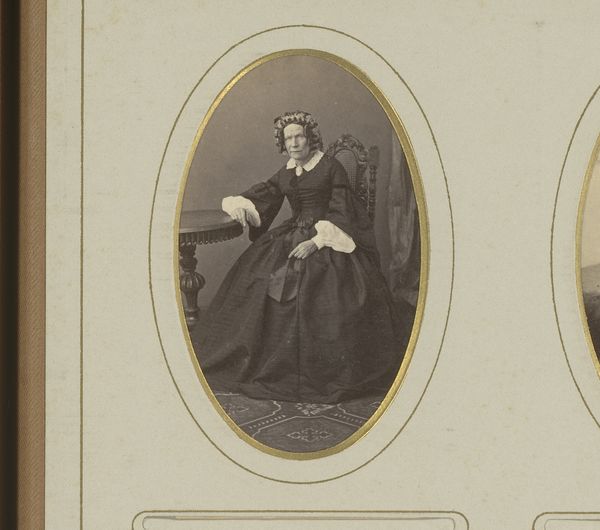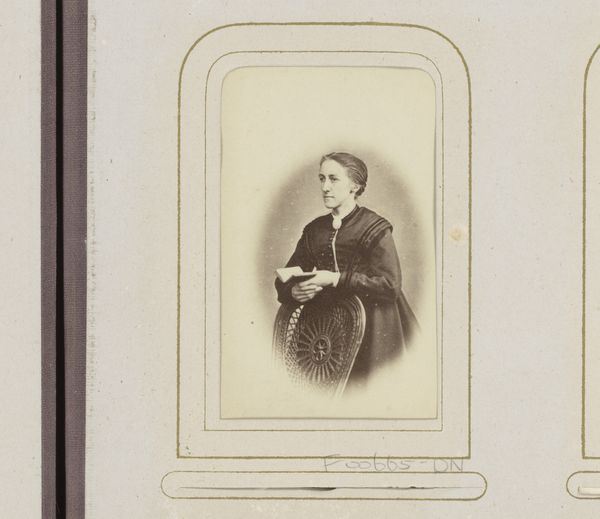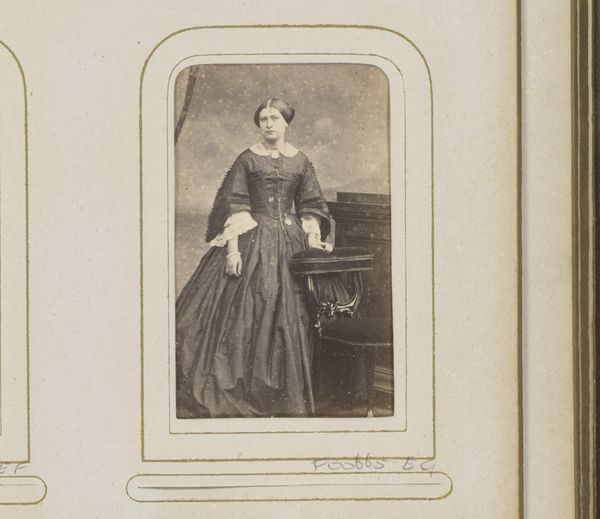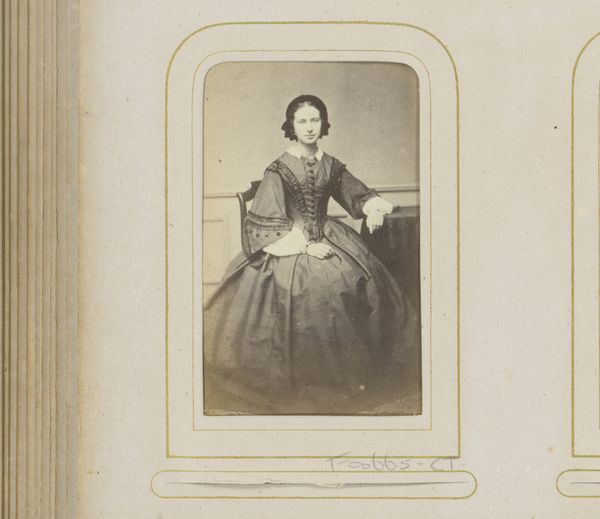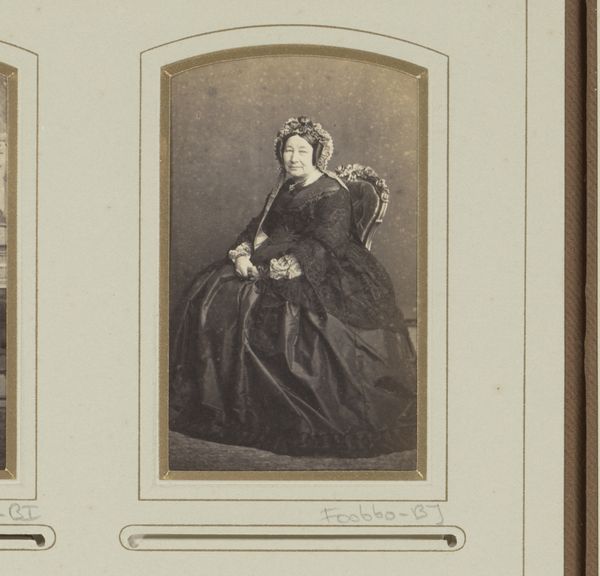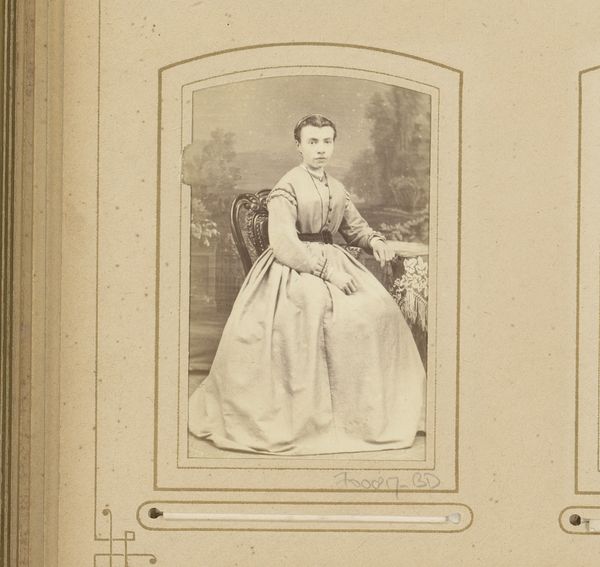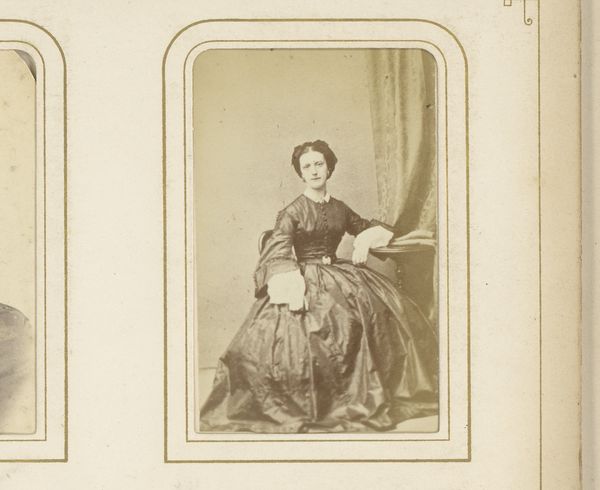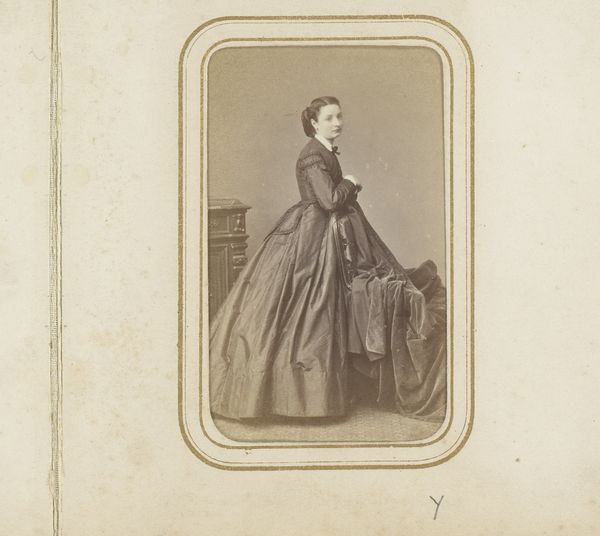
photography
#
portrait
#
photography
#
historical photography
#
19th century
#
realism
Dimensions: height 84 mm, width 54 mm
Copyright: Rijks Museum: Open Domain
Editor: Here we have "Portret van een vrouw met muts en boek," taken sometime between 1859 and 1870. It’s a photograph by Eduard Fuchs, and I’m struck by the formality of the image. What do you see when you look at it? Curator: The photograph speaks volumes about the evolving social function of art during the mid-19th century. Prior to photography, portraits were a privilege of the wealthy. The rise of photography democratized image-making, allowing a broader segment of the middle class to participate in portraiture. How does this democratization affect artistic conventions, in your opinion? Editor: That's fascinating! I suppose that more affordable portraits might change how people wanted to be seen. Do you think this explains the woman's poised expression and her elegant dress? Curator: Precisely! These photographs helped establish and reinforce ideals of bourgeois identity and social standing. Notice the book she holds—it acts as a signifier of education and leisure, both highly valued in the middle class. Photography in this context becomes a powerful tool for social climbing and self-representation. Consider how the rise of museum culture contributed to a wider access of visual learning for the burgeoning middle class. Editor: So, this photograph is about more than just capturing a likeness; it's about crafting an image and belonging. Curator: Indeed. It also touches upon the early commercialization of photography studios, making image creation a public transaction, almost a performance. What’s particularly striking about photography from that time? Editor: That it’s frozen history—the gaze fixed in time! Thank you for pointing out how art history reflects this intersection between image creation, society, and social standing. I’ll certainly be looking at these pieces differently now. Curator: It has been a stimulating exchange.
Comments
No comments
Be the first to comment and join the conversation on the ultimate creative platform.
